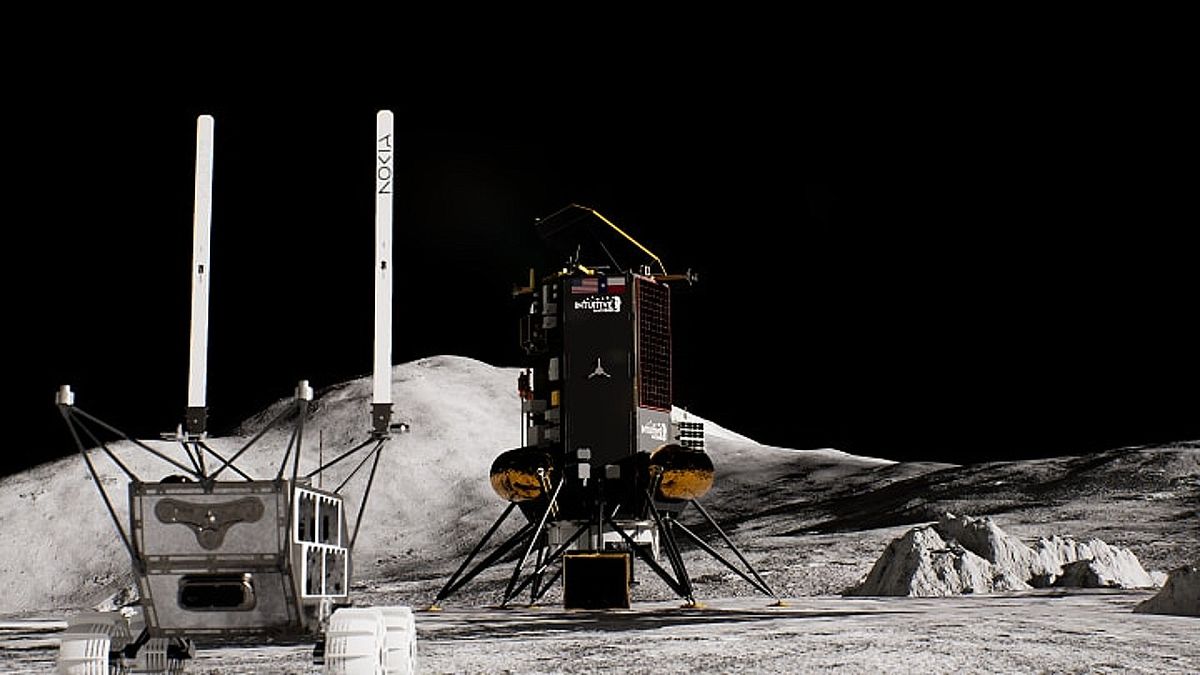
Text messages on moon? For future lunar astronauts, this may be a good possibility.
Nokia is developing an LTE/4G communications system for the moon, and the first piece of the network could be launched late this year. The hardware for a simplified version of the network is scheduled to launch late this year as part of the IM-2 Intuitive Machine mission, which is expected to land at the moon's south pole.
The Nokia equipment, which is essentially a “network in a box,” will connect Intuitive Machines' Nova-C lunar lander to the Lunar Outpost's MAPP rover and Intuitive Machines' Micro-Nova rover, to test their viability at close ranges. And far away.
Related: Astronomers call for radio silence on the far side of the moon
“Like shelter, food and life support, communications will be a critical component of any future mission to the Moon or Mars,” Terry Klein, head of Bell Labs Solutions research at Nokia, said in a press release. statement. “Instead of ‘reinventing the wheel’ by creating a private network in space, we are leveraging the same cutting-edge technologies that connect billions of smartphones to satellites.” Land“.
In 2020, NASA awarded contracts to 14 companies to develop “tipping point” technologies in support of the Artemis program; Nokia received $14.1 million to build the first cellular network on the moon. Rather than developing entirely new technology, Nokia is adapting its existing devices to the lunar environment.
If all goes according to plan, Nokia's 4G/LTE satellite network will provide greater bandwidth than traditional ultra-high frequency (UHF) systems used for space communications. This will not only make faster communications from astronaut to astronaut, but also for autonomous robotic systems on the Moon. In addition, the network can eventually be adapted for it Mars – And upgrade it to 5G one day.
“Just think about the scale of operations on the Moon over the next 20 years,” Klein said. “There will be multiple missions in one year operated by different space agencies and even commercial projects. There will be bases in different areas of the Moon.” .
“Having each mission individually set up its own communications systems would not make any sense economically. Instead, it would need to use the same infrastructure in the same locations and connect all the different bases on the moon. That is the role of the service provider,” he added. Klein.
But not everyone is happy with the idea of a cellular network on the moon. Radio astronomers are concerned that such a network could lead to radio frequency interference (RFI) that disrupts radio observations.
But there is still hope: operators like Nokia can, in theory, protect certain frequencies, leaving radio observatories safe.

“Web maven. Infuriatingly humble beer geek. Bacon fanatic. Typical creator. Music expert.”





More Stories
Scientists confirm that monkeys do not have time to write Shakespeare: ScienceAlert
SpaceX launches 23 Starlink satellites from Florida (video and photos)
A new 3D map reveals strange, glowing filaments surrounding the supernova